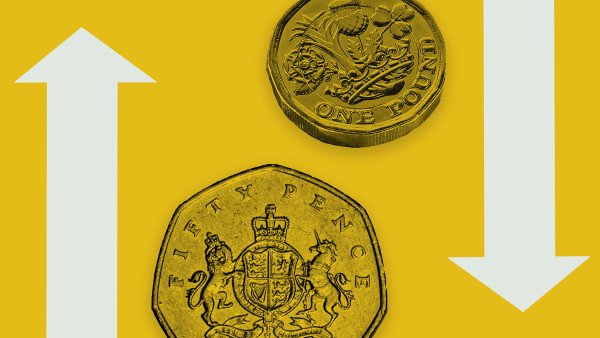

Inflation has been one of the biggest topics discussed by the investing community over the past two years.
While many still debate persistent versus temporary inflationary pressures or the timing of a potential peak in inflation, consumers, companies and investors have had to deal with the practical consequences of rising prices.
The US, UK, and EU are experiencing year-on-year price increases in the region of 5 to 9 per cent almost every month this year, with many emerging markets fighting numbers significantly higher.
But how did we get here?
Various factors have contributed to inflation running at multi-decade highs all over the world.
It started with the Covid-19 pandemic, widespread lockdowns together with huge government and central bank spending, and subsequent surges in demand when businesses and economies reopened.
It continues with related supply chain issues, creating shortages in multiple industries.
Throw the Russia/Ukraine conflict into the mix and you also end up with very high food and even higher energy prices.
What creates a further headache for businesses is a tight labour market and continuously increasing wages, which together with higher input costs puts significant pressure on companies’ profit margins.
What we end up with are governments and policymakers trying to curb inflation by hiking interest rates and decreasing money supply in the economy; companies struggling with lower profitability; and a squeezed consumer battling high food, energy, and mortgage bills.
The markets suffer as a result and it is no surprise the investment community has been working hard to find interesting opportunities, which would not only stay largely unaffected by these issues but would also contribute to positive returns in their portfolios.
Is inflation structural and here to stay?
While it is unlikely we will see inflation in developed markets return to the low levels of 0 to 2 per cent seen in the previous decade any time soon, it is not expected to stay at these multi-year highs for very long.
Many of the drivers of increasing prices are temporary and are expected to stabilise in the short to medium term.
Supply chain issues resulting from lockdowns will become less prevalent, Covid-induced pent-up demand will normalise, and food and commodity prices should stabilise once the Russia/Ukraine conflict resolves, all of which together with the base effect should ensure inflation rates will gradually decrease.
It can be challenging for individual investors to watch the current market volatility, coupled with worrying macroeconomic news flow, and not think about liquidating some of their exposure or staying away from the market altogether.
We, however, advise our clients to keep a calm head and pay attention to the opportunities the current turmoil creates as well as keep focusing on the long term, as trying to time the market often creates even bigger issues.
Staying ahead of inflation
The fixed income market has been hit in the past six months by the rapid rise in US Treasury and other developed market yields.
While it may be too early to call this the bottom, some value is starting to crystallise in the longer-dated part of the market.
US and UK investment-grade bond benchmarks are down between 10 to 15 per cent year to date, and it is now increasingly possible to find very good investment-grade bonds at attractive valuations.
For this reason, we suggest selectively adding very high-quality credits with 4 to 6-year duration, which should benefit in an environment of decreasing inflation, slightly lower interest rate expectations, and even in a recessionary scenario should interest rates rise further from current levels.
On the flip side, if you are a firm believer that inflation stays sticky and rates move even higher, buying good-quality floating rate bonds and Treasury inflation-protected securities may be a good option.
However, it is important to note that they will not perform particularly well should this high inflation lead to a recession.
The equity market experienced even higher volatility this year, with some major developed market indices down between 12 and 25 per cent year to date.
However, there have been huge disparities between different sectors and individual companies.
Many high-growth technology companies with limited profitability/cash flow generation trading on high multiples have been hit the hardest and, in many cases, are down between 50 to 80 per cent from their highs, while more traditional and often more cyclical 'value' businesses have outperformed.
Some of the key beneficiaries of this value outperformance have been commodity/mining-exposed companies, but we would be cautious about this exposure going forward, as inflation leading to an economic slowdown would likely reverse the good performance of these stocks.
These large disparities have created interesting opportunities, particularly in certain growth sectors.
While we would discourage investments in speculative tech businesses, we believe several high-quality companies with wide moats and an ability to pass on inflation are now trading at attractive valuations and are a good addition to many long-term portfolios.
One may also consider a small allocation to alternative investments, especially select macro-focused strategies.
Macro hedge funds tend to be a good diversifier in difficult times, and they have proved their value again this year after posting positive returns year to date, beating many other asset classes.
Gold is another example of a diversifying asset, which tends to do well in market sell-offs as investors seek uncorrelated hedges and stores of value.
Emerging markets are likely to stay under pressure not only due to inflation and potentially slowing growth but also because of Covid disruptions lasting longer than in many other countries, as well as political uncertainties and social unrest induced by a significantly squeezed consumer.
What we are witnessing in Sri Lanka may be just the beginning – widespread demonstrations, violence, and political turmoil caused by unprecedented food and fuel shortages and a severe economic crisis could become a serious issue in several other countries.
Inflation in the UK is particularly high and combined with stalling growth the prospect of prolonged stagflation is higher than in other markets.
Business size will also matter, not only in the UK but globally. Large-cap companies are more likely to be successful in weathering the current storm, from absorbing higher input and financing costs, to a better ability to potentially pass some of the commodity price increases onto their customers.
Staying nimble and focusing on the long term
A huge amount of uncertainty together with a considerable amount of volatility does not make investing simple.
We believe it is crucial to look through the short-term price movements and focus on long-term returns, as well as to stay nimble and ready to take advantage of any new opportunities.
Vikash Gupta is chief executive and co-founder of VAR Capital



